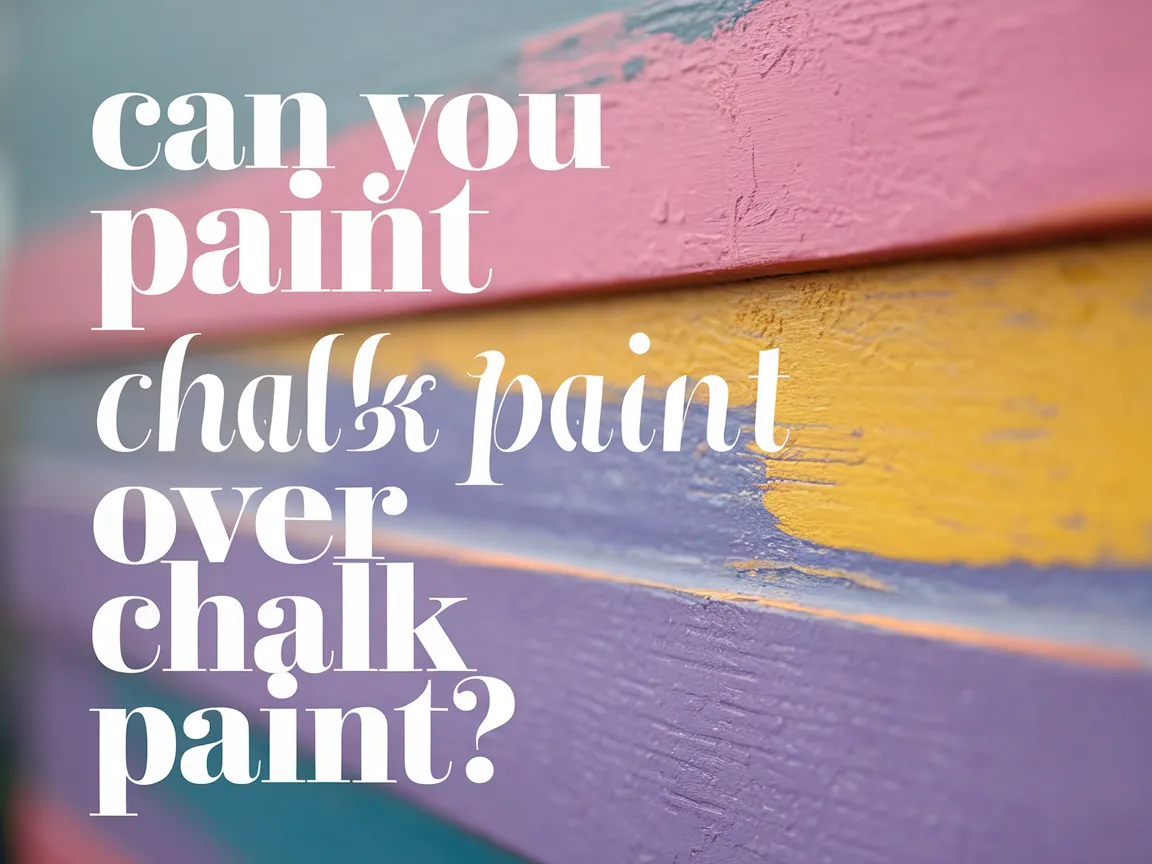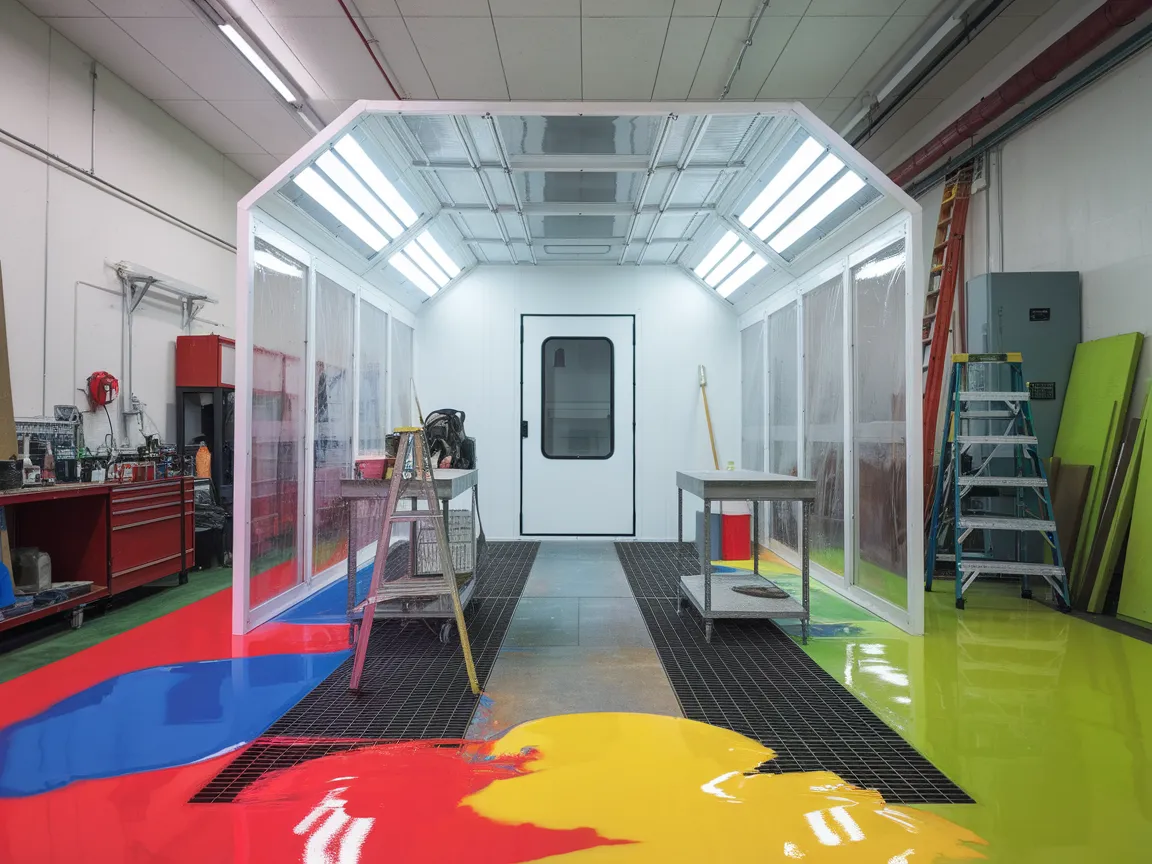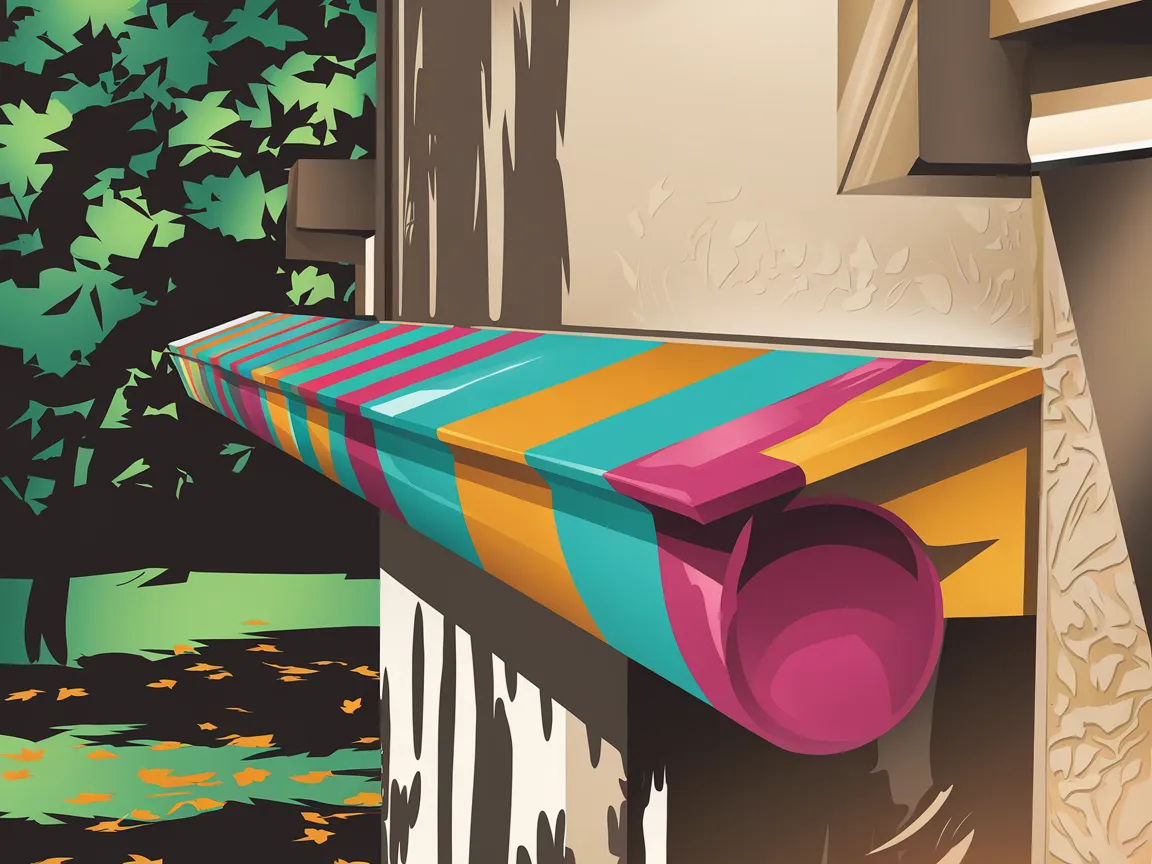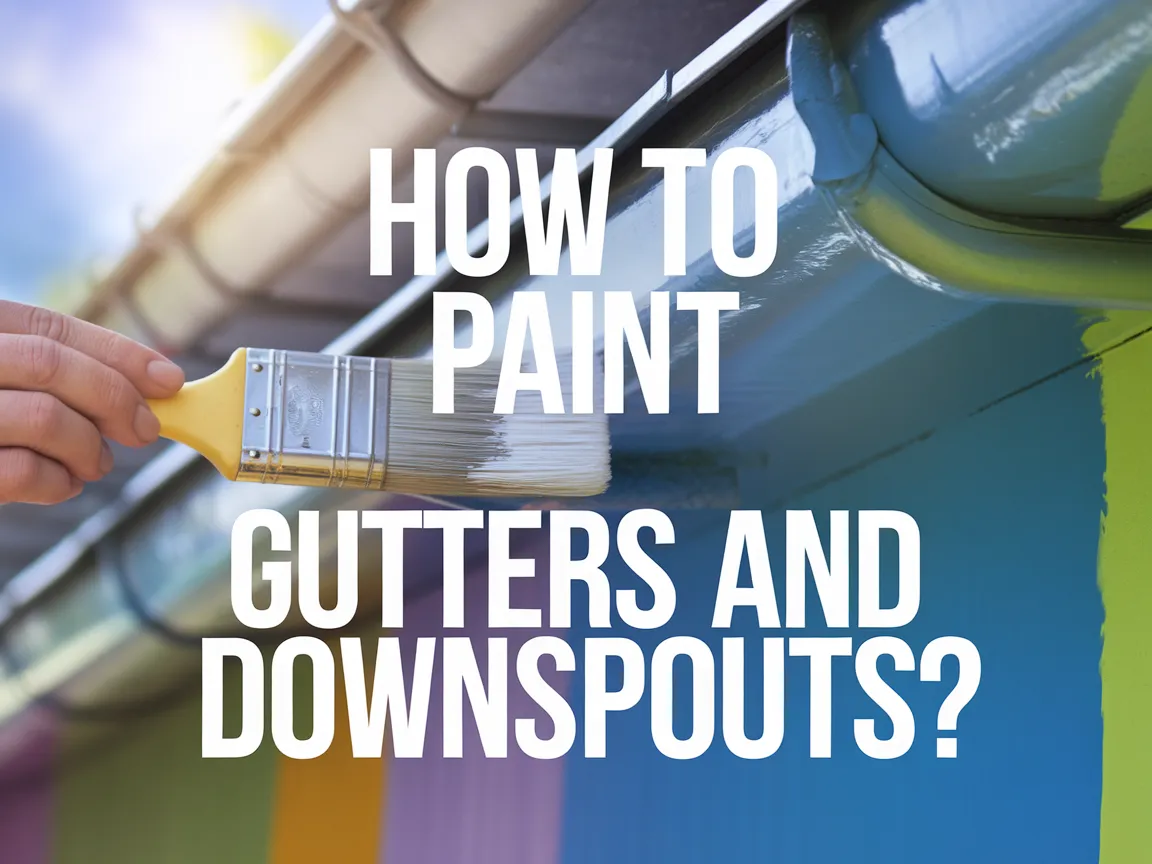Can You Paint Directly on Drywall?
Drywall is like a giant, flat puzzle piece that makes your walls smooth and nice. It’s made of a board with gypsum inside, wrapped in paper, and it helps shape your rooms.
Now, can you paint directly on paint drywall surfaces? It’s super important to know how to do it right, trust me. I’ve painted drywall before and learning the steps saved me from making a mess and added flair to my space.
In this guide, you’ll explore essential preparations before painting, step-by-step instructions, color ideas, types of paint for drywall, common problems, and how to fix them. We’ll also tackle questions like can you paint over drywall tape or wet spackle, giving you the confidence to start your project.
Contents
- 1 Can You Paint Directly on Drywall?
- 2 What is Drywall and Why It Matters?
- 3 Essential Preparations Before You Start Painting
- 4 Step-by-step Instructions for Painting on Drywall
- 5 Types Of Paint Suitable for Drywall Applications
- 6 Factors Affecting the Outcome Of Painting Directly on Drywall
- 7 Common Issues Encountered When Painting Directly on Drywall
- 8 Finishing Touches to Enhance Your Drywall Paint Job
- 9 Creative DIY Project Ideas With Painted Drywall
- 10 Choosing the Right Primer for Drywall Painting
- 11 Common Mistakes to Avoid When Painting Drywall
- 12 Drywall Maintenance Tips After Painting
- 13 Frequently Asked Questions About Painting Directly on Drywall
- 14 Conclusion
- 15 Additional Resources
Can You Paint Directly on Drywall?
You can paint directly on drywall, but prep is key. Make sure it’s clean and dry. Just use a good primer first for the best results. Otherwise, the paint might not stick well.
The Finishing Touch
A freshly painted wall is a blank canvas. The best way to bring your room to life is with a single piece of statement art that ties everything together.
Browse Wall Art at Big Wall DecorWhat is Drywall and Why It Matters?
Drywall, also known as gypsum board or wallboard, has a core made from gypsum (Calcium Sulfate Dihydrate) sandwiched between two sheets of heavy paper. It comes in various sizes, most commonly 1.22 meters x 2.44 meters (4 Ft X 8 Ft), and typically measures 1.27 cm (½ Inch) thick, though thicker versions are available for different applications.
Can you paint directly on drywall? I remember tackling my first DIY project; the raw, unfinished drywall seemed intimidating. I sifted through a lot of advice, and there’s much to consider before picking up that paintbrush! When painting unique surfaces like airsoft guns, it’s important to know how to paint them effectively.
You might be surprised, but I used it for my home office makeover. After priming, painting directly on the freshly installed drywall turned out great. Understanding if you can paint over drywall helped me avoid issues, like learning the hard way that everything needs to be smooth before any paint is applied! Knowing whether to use primer on new drywall is essential for a flawless finish. Proper surface preparation is crucial to prevent any issues, especially when considering the factors that cause paint oxidation.
Essential Preparations Before You Start Painting
What do you need to prepare for?
- Quality Primer: Use products like Zinsser Bulls Eye 1-2-3 or Behr Multi-Surface Primer. They seal and bond drywall, ensuring even paint application.
- Paint Rollers: Choose rollers like Wooster Pro/Doo-Z 9-inch or Purdy White Dove. They apply paint quickly on large surfaces, like drywall.
- Drop Cloths: Use thick canvas cloths or plastic sheeting to protect floors and furnishings from paint splatters.
- Spackling Paste: Choose DAP Fast ‘N Final or 3M Patch Plus Primer to repair holes or imperfections in drywall before painting.
- Fine Sandpaper: Get 120-grit sandpaper or sanding blocks to smooth rough areas after spackling for a flawless finish.
So far we covered key preparations needed for painting. Let’s look at the step-by-step guide for painting on drywall next.
Also See: Can Rain Gutters Be Painted? Here’s What to Know
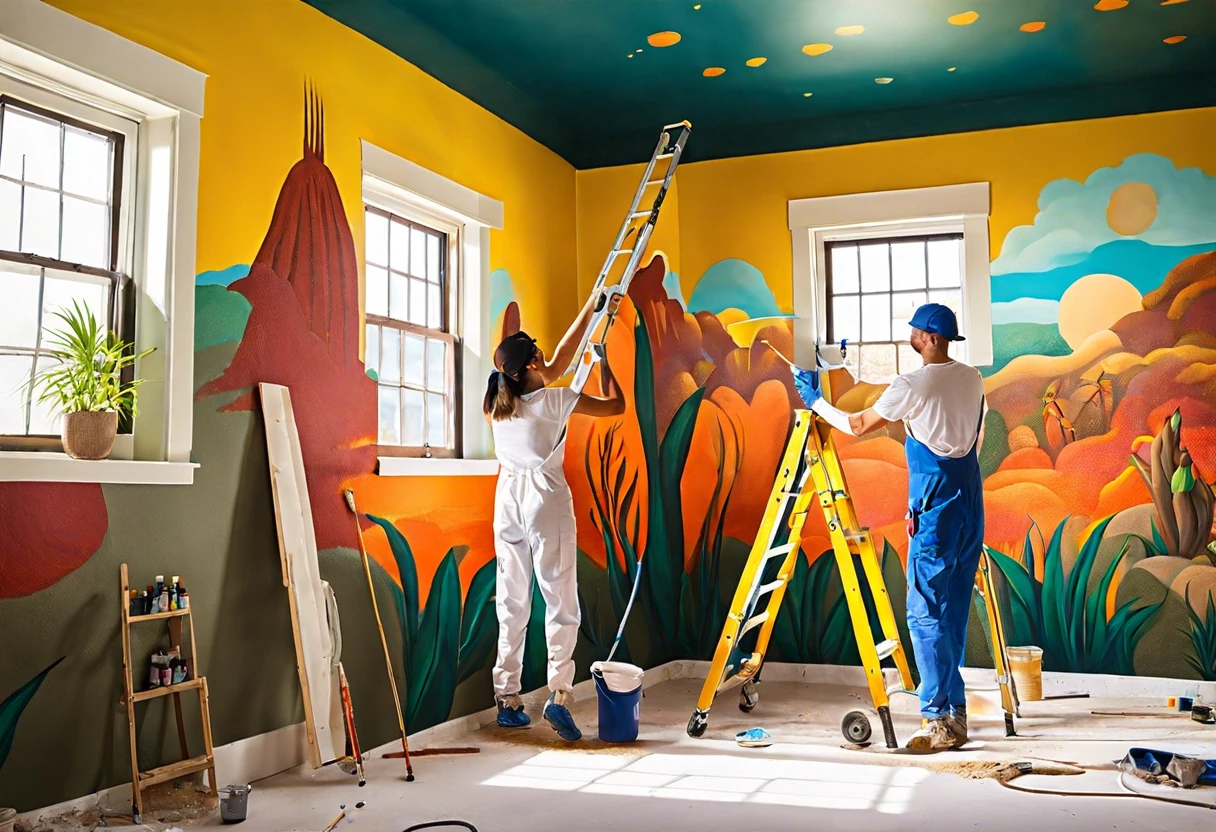
The Finishing Touch
A freshly painted wall is a blank canvas. The best way to bring your room to life is with a single piece of statement art that ties everything together.
Browse Wall Art at Big Wall DecorStep-by-step Instructions for Painting on Drywall
Follow these steps to paint directly on drywall for the best results.
-
Prepare the Drywall Surface
Remove dust and debris from the drywall with a damp cloth or a vacuum with a brush attachment to ensure a smooth finish.
Check for imperfections or lumps on the drywall surface. Smooth rough spots with 120-grit sandpaper to avoid unwanted textures when painting.
-
Apply Primer if Necessary
If your drywall is new or has been patched, apply a coat of high-quality drywall primer. Let it dry completely for at least 2 hours.
I once skipped primer on fresh drywall, thinking paint would suffice. Unless your paint is specifically designed for it, don’t make the same mistake to avoid absorption issues.
-
Choose the Right Paint
Select paint designed for drywall, with a finish of your choice. For most interiors, flat or eggshell paints are ideal as they help conceal imperfections.
Consider the paint’s coverage: an average gallon (3.78 L) covers 350 to 400 ft² (About 33 to 37 M²). Plan your purchase based on the area size you’ll be covering.
-
Begin Painting the Drywall
Using a roller, apply paint evenly, starting from the corners and working outward. Angling your roller can help reach awkward spaces with less effort.
Don’t overload your roller; it’s better to apply multiple thin coats than one thick, uneven coat. Aim for about 24 hours of drying time between coats if applying a second layer.
-
Allow Proper Drying Time
After each coat, wait the recommended drying time before applying another. Most latex paints need about 2 to 4 hours to dry to the touch and can take up to 30 days to cure completely.
This timing varies based on humidity and temperature, but rushing could ruin the finish. Patience yields the best results!
We’ve wrapped up step-by-step painting instructions for drywall here. Let us turn our attention to suitable paint types for drywall applications.
Types Of Paint Suitable for Drywall Applications
Let’s discuss the types of paint: latex, acrylic, oil-based, and specialty paints.
-
Latex Paint
Latex paint is water-based and dries quickly. It’s perfect for drywall because it allows for easy cleaning and is flexible, minimizing cracking.
-
Acrylic Paint
Acrylic paint is also water-based but offers a more vibrant finish. It’s ideal for drywall due to its strong adhesion and excellent color retention over time.
-
Oil-based Paint
Oil-based paint provides a smooth, durable finish. While less common on drywall, it’s great for high-traffic areas because it’s resistant to wear and tear.
-
Specialty Paints
Specialty paints include textured options or mildew resistance. These are perfect for adding character or protecting your drywall from moisture damage.
From my experience, I prefer latex paint for most drywall applications. Its easy application and cleaning make it a hassle-free option.
We have now covered various paint types suitable for drywall. Next, we’ll discuss the factors affecting painting outcomes on drywall.
Factors Affecting the Outcome Of Painting Directly on Drywall
What factors influence painting directly on drywall?
-
Drywall Condition: Smooth, undamaged surfaces absorb paint better and provide a stronger finish.
-
Type of Paint: Some paints adhere well to drywall, while others need a primer for the best results.
-
Humidity Levels: High moisture can cause peeling paint. Ensure the drywall is dry first!
-
Use of Primer: New drywall benefits from a primer coat, helping paint stick effectively.
So far we covered the elements influencing painting directly on drywall. Let’s look at the typical problems faced during this process next.
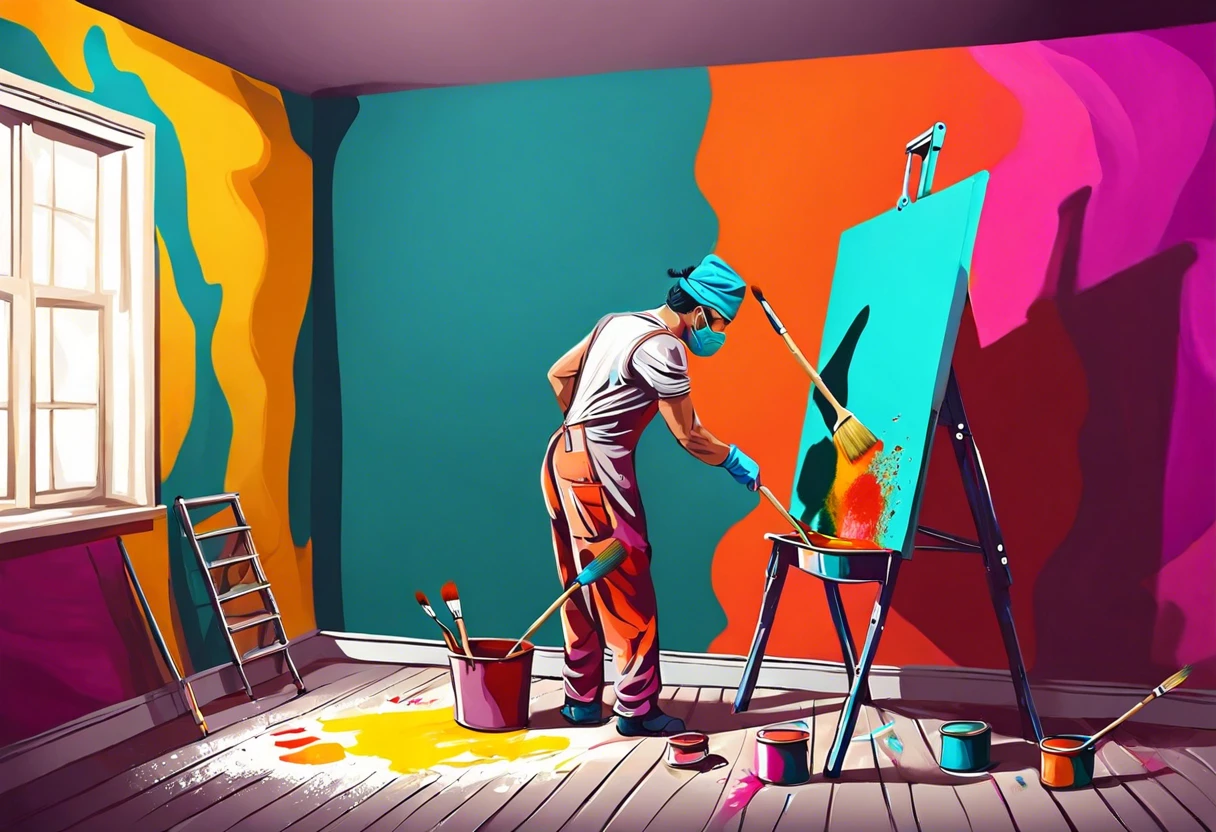
Common Issues Encountered When Painting Directly on Drywall
Once, my friend was excited to paint directly on drywall. Unfortunately, the texture wasn’t right, leading to uneven coverage. She hadn’t primed the surface.
To fix this, use a drywall primer that covers 30-40 m² (323-430 Ft²) per gallon. Priming creates a smooth, even base for a better finish.
Finishing Touches to Enhance Your Drywall Paint Job
After confirming you can paint directly on drywall, don’t forget to seal the edges with painter’s tape. This sharpens lines and prevents wrinkles during drying.
Inspect where joints meet and check for even spacing of 16 inches (40.64 Cm) between screws. Use products like Laticrete 420 or my favorite, Rolco Drywall Round, for more accurate finishes.
Here’s a pro tip from my past projects: Apply a coat of Kilz Complete (Primer) before your final paint. This boosts durability and refreshes colors, reducing maintenance.
Creative DIY Project Ideas With Painted Drywall
Why not transform your space with a hand-painted mural right on drywall? Or how about creating playful geometric wall art using painted wood scrap pieces attached to drywall?
The Finishing Touch
A freshly painted wall is a blank canvas. The best way to bring your room to life is with a single piece of statement art that ties everything together.
Browse Wall Art at Big Wall DecorFor a mural, I’d grab some acrylic paints, foam brushes, and a roller. Expect to spend about $30 to $50 and a weekend to make it awesome!
If you fancy alternatives, try using canvas sheets. Just staple them over your drywall! You can easily swap them out as your style evolves. Plus, there’s zero worry about the drywall damage!
Choosing the Right Primer for Drywall Painting
A proper primer makes a world of difference when painting drywall. Here’s how to choose the right one.
| Type of Primer | Best Use | Coverage (m² per L) |
|---|---|---|
| Water-based Primer | New drywall or light stains | 10-12 m² (108-130 ft²) |
| Oil-based Primer | With heavy stains or water damage | 8-10 m² (86-108 ft²) |
| Shellac-based Primer | For tough stains like smoke | 12-14 m² (129-150 ft²) |
| Bonding Primer | On glossy surfaces for better adhesion | 9-11 m² (97-118 ft²) |
Common Mistakes to Avoid When Painting Drywall
Painting drywall can be tricky. Here are mistakes you should watch out for:
- Skipping Primer: Don’t overlook this step! Primer prevents peeling and ensures even coverage.
- Using Thin Coats: Thin coats are great, but too thin can lead to needing more overall paint.
- Rushing Dry Time: Patience is key! Always allow proper time between coats for a better finish.
- Poor Preparation: Always clean your drywall. Dust and dirt can ruin a perfect paint job.
Drywall Maintenance Tips After Painting
Keeping your painted drywall looking fresh requires some care. Here are tips to help maintain your work.
| Maintenance Task | Frequency | Detail |
|---|---|---|
| Dusting | Monthly | Gently remove dust with a microfiber cloth to avoid scratches. |
| Wash Walls | Every 6 Months | Use a damp sponge with mild soap to clean stains without harming paint. |
| Check for Cracks | Annually | Inspect for any damage or cracks, and perform touch-ups as needed. |
| Repaint | Every 5 Years | A coat refresh keeps colors vibrant. Choose a similar hue for easy application. |
Frequently Asked Questions About Painting Directly on Drywall
What Type Of Paint is Best for Drywall?
For drywall, latex paint is best. Latex paint, known for low VOC (Volatile Organic Compounds), dries quickly and cleans up easily with water. It comes in various finishes, like matte, eggshell, or satin, and offers a durable wall surface.
Should I Use Primer on Drywall Before Painting?
Yes, you should use primer on drywall before painting. Primer helps seal the porous surface of drywall, promoting better paint adhesion and providing an even finish. Without it, you may need 2-3 coats of paint for full coverage, increasing your time and material costs. If you’re considering exterior renovations, you might wonder if aluminium siding can be painted.
How Can I Fix Mistakes Made While Painting Drywall?
You can fix mistakes made while painting drywall easily. If you’ve smudged or dripped paint, let it dry, then gently sand the area and touch up with a small brush. For larger errors, apply a thin coat of primer and repaint that section. The effectiveness of your repairs can often depend on understanding what components make up auto paint, offering insights into its composition and application through an exploration of its ingredients.
Is It Possible to Paint Over Textured Drywall?
Yes, it’s possible to paint over textured drywall. Texture types, like knockdown or slap brush, require careful attention. Use a thicker-nap roller to ensure paint gets into the grooves. Consider that textured walls may need extra paint for full coverage. If you’re also dealing with metal surfaces like aluminum, you might be wondering how to approach that task. Find the guidance you need by checking the article on painting aluminum surfaces.
How Long Will It Take for Painted Drywall to Dry?
Painted drywall typically takes about 1-2 hours to dry to the touch. However, complete cure time can stretch to 24 hours or more, depending on humidity and temperature. Ideal conditions improve paint adhesion and finish quality. If you’re interested in experimenting with color application and technique, you might want to explore how to paint a beach sunset on your own surfaces.
Can You Paint Over Torn Drywall Paper?
No, you can’t paint over torn drywall paper. Torn paper may cause the paint to peel or bubble. Replace or repair the torn areas with drywall tape and compound before painting for a smooth, professional finish. For further enhancement of your paintwork, you might wonder if you can add water to paint to thin it out.
Can You Paint Over Wet Spackle?
No, you can’t paint over wet spackle. Wet spackle needs to dry completely to ensure the paint adheres properly. Wet conditions can lead to uneven finishes. Drying time usually ranges from 1-12 hours based on the humidity and type of spackle used.
If you’re interested in experimenting with different painting techniques, you might want to explore how to antique furniture with paint and stain for a unique finish.
Can You Use Primer Paint on New Drywall?
Yes, you can use primer paint on new drywall. It’s essential as new drywall is very porous and can absorb a lot of paint. A typical primer application just absorbs about 25-50% of the total paint, ensuring better overall coverage.
Conclusion
That’s everything I wanted to share with you. We covered drywalls, essential preparations, step-by-step painting instructions, suitable exterior painting techniques, appropriate color palettes, factors that affect results, common issues, finishing touches, and creative DIY ideas.
I trust these insights have been helpful. To answer the question, can you paint directly on drywall? Yes, you can, but it’s best to prepare the surface well to avoid issues like peeling and uneven finish.
For more in-depth information and resources, feel free to visit Paint Answers.
Additional Resources
- Loomis, A. (2011). Figure Drawing for All It’s Worth. New York, NY: Titan Books.
- How to Paint Sheetrock: 12 Steps (with Pictures)
- How to Paint Drywall | HowStuffWorks
- When Is It Okay to Use Paint-and-Primer-in-One on Interior Walls?
Isabella is a Filipino-American art writer and critic specializing in contemporary painting, blending her Filipino heritage with global art trends. She holds a BFA from California State University, Long Beach, and a Minor in Art History from the University of the Philippines. Isa has experience as a Gallery Assistant, Art Appraisal Specialist, and Social Media Creative for Art & Design.
Exterior, Wall






